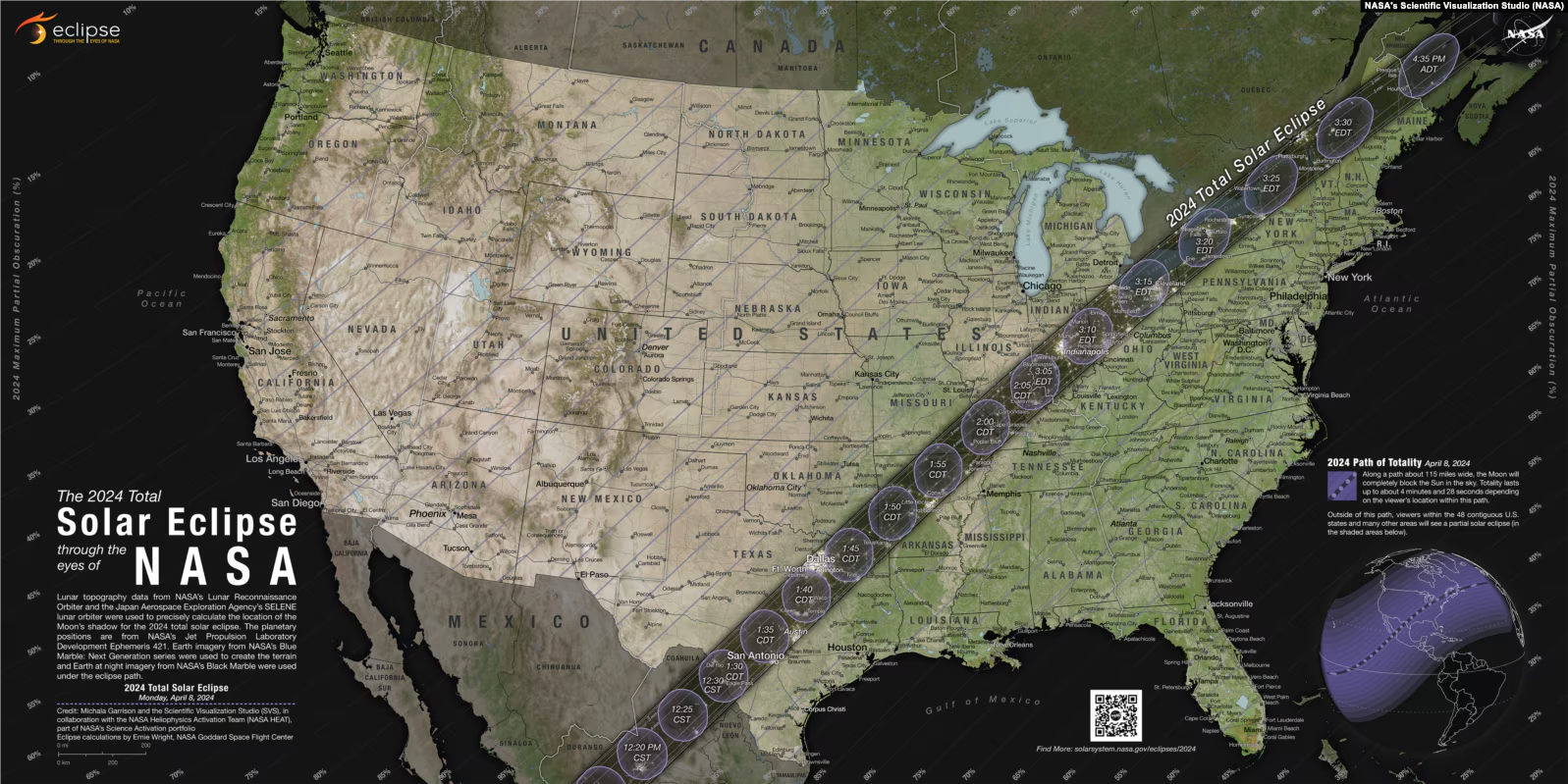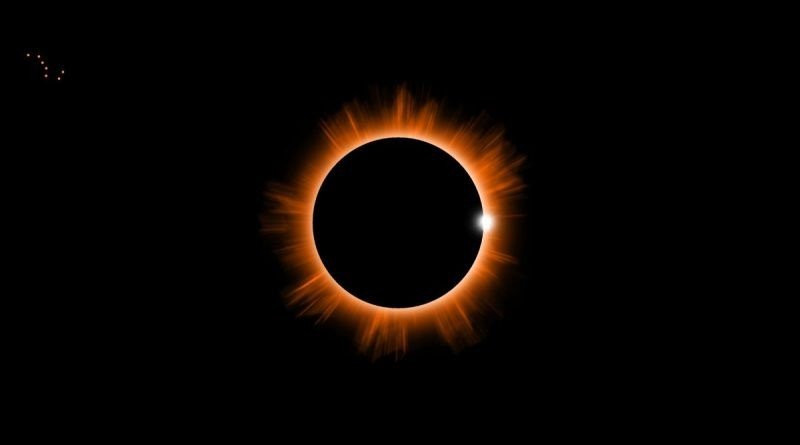Solar eclipse – 2024: what you need to know
On Monday, April 8, 2024, Earth’s inhabitants will witness a rare astronomical phenomenon – a total solar eclipse.
WHAT IS IT?
A total solar eclipse occurs at the moment when the Moon is strictly between the Sun and the Earth – so that all three celestial bodies are on the same line. The Moon blocks out the sunlight at this point, briefly turning day into night.
Eclipses can also be partial or ring-shaped – in the latter case the Moon appears against the background of the solar disk, not closing it completely. On April 8, a total solar eclipse will occur – the Moon will completely cover the Sun.
WHERE CAN I OBSERVE THE ECLIPSE?
Those who will be in the zone of the so-called “path of totality” – a strip of the Earth’s surface where the solar disk will be completely hidden behind the Moon – will be able to see the total phase of the eclipse. This year the “path of totality” will pass through the countries of North America
The first to see the eclipse will be residents of the northern regions of Mexico, after which residents of the United States will be able to observe the phenomenon.
The total eclipse will be visible in Texas (including Dallas and Austin), southeastern Oklahoma, Arkansas (including the capital city of Little Rock), southeastern Missouri, small portions of Tennessee and Kentucky, southern Illinois, most of Indiana (including Indianapolis, Bloomington and Evansville), northern and western Ohio (the eclipse will be visible in Akron, Toledo, and Cleveland), a small area in southern Michigan, the northwestern corner of Pennsylvania (Lake Erie shore), along the northern border of New York State (including the city of Buffalo), and northern Vermont, New Hampshire, and Maine.

In Canada, the eclipse will be visible in the very south of the provinces of Ontario and Quebec (along the U.S. border), as well as in the coastal province of New Brunswick and the island of Newfoundland.
However, even far from this line, the rare phenomenon can be seen, even though the eclipse will not be total. The partially hidden solar disk will be visible in most of North America, northwest Europe, some islands of Oceania, and the north of the South American continent.
HOW CAN I SEE AN ECLIPSE?
In order to watch the solar eclipse live, people need special darkened glasses or special light filters. Observing the sun without them during the eclipse can cause serious eye injuries. Ordinary sunglasses are not suitable for this purpose.
NASA experts also warn: it is dangerous to look at the eclipse through a camera, binoculars or telescope – even if you use special glasses. These devices require special solar filters.
You can observe the eclipse directly without any protection only at the moment when the solar disk is completely hidden behind the Moon.
An alternative to protective glasses is a camera obscura, which you can make yourself. The Goddard Space Flight Center has published a video explaining how to do it – all you need is a cardboard box, the hole in which will project the solar eclipse without harming your eyes.
WHAT IS THE VALUE OF A SOLAR ECLIPSE?
Eclipses are a unique opportunity for scientists to make measurements not normally available. In anticipation of the 2024 eclipse, American scientists have prepared a whole series of scientific projects.
One of them is the flight of research aircraft WB-57, which will rise to a height of 15 kilometers at the time of the eclipse. The plane’s camera will take pictures of the solar corona, and the instruments on board will try to collect data on coronal emissions, temperature and composition of the corona.
On Earth, the eclipse will be studied by operators of the SuperDARN system, which is a large-scale network of radars around the world. Led by scientists at Virginia Polytechnic Institute, three SuperDARN radars will measure the ionosphere during the eclipse, which provides a unique opportunity to study the effects of solar radiation on the upper part of the Earth’s atmosphere.
NASA will also study the atmosphere, launching three rockets at once during the eclipse. The mission called APEP (translated as “Atmospheric Perturbations around the trajectory of the eclipse”) is designed to understand what is the scale of the impact of the eclipse on our planet. Instruments aboard the rockets will measure fluctuations in electric and magnetic fields, temperature and other parameters.
In addition to rockets and airplanes, scientists will use kites. For example, scientists from the University of Hawaii will launch special kites that will lift spectrometers to a height of one kilometer to measure the composition of the solar corona.
WHEN IS THE NEXT ECLIPSE?
The next time such a phenomenon can be seen in the skies over the United States will not be until August 2044.
The current setting of the Sun behind the Moon will be the first eclipse in the XXI century, which can be observed simultaneously in the United States, Canada and Mexico. The previous total eclipse Americans observed relatively recently, in 2017, but such a short interval is more of an exception. Before that, a total eclipse occurred over American territory only in 1979.
In addition, this year’s eclipse will be much larger than the previous one. On April 8, 2024, the Moon will be much closer to Earth, which will increase the duration of the eclipse and the area of the “path of totality.” If in 2017 the maximum width of the “path” was 114 kilometers, in 2024 this figure will reach 196 kilometers.
This year’s event should also gather more spectators: 31 million people live in the observation area of the total eclipse in 2024; last time the number of residents in the “path of totality” was only 12 million.
